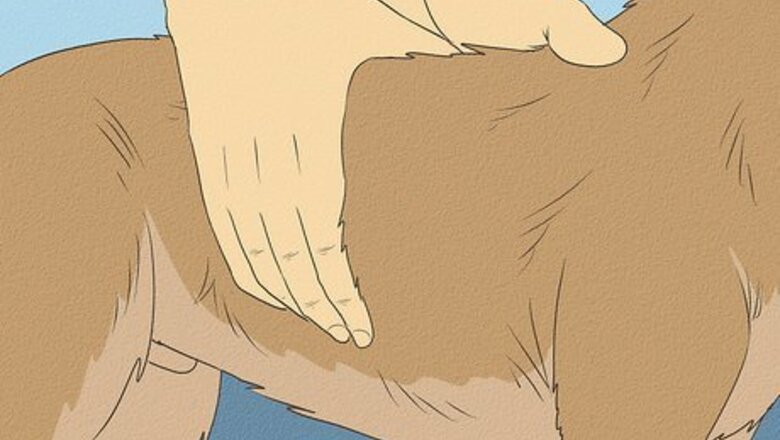
views
Assessing Your Dog’s Appearance
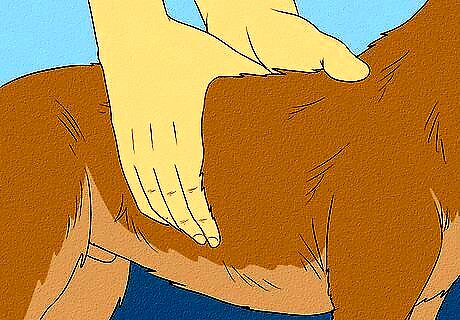
Do a rib check. By doing a simple rib check, you can determine if your dog is at a healthy weight. Place both of your thumbs on your dog’s backbone. Then, spread your hands across its ribcage as if you are holding it. You should be able to feel your dog’s ribs easily, without applying too much pressure. Your dog’s ribs should also be slightly visible. If your dog’s ribs are not visible and/or if you have to apply pressure to feel its ribs, then your dog might be overweight.
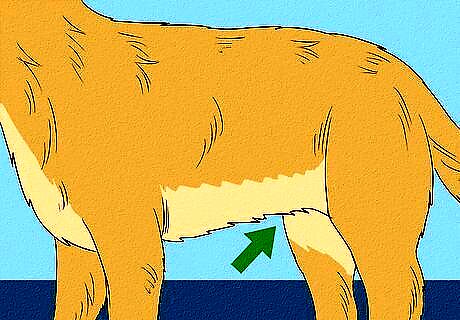
Examine your dog’s profile. You also need to assess your dog’s profile. Have your dog stand up, and get on the same level as your dog. Look at your dog’s underside, particularly the abdomen, i.e., the section just above the hind legs. A healthy dog will have an abdomen that is tucked up behind its ribcage. An abdomen that sags is a common sign that your dog is overweight.
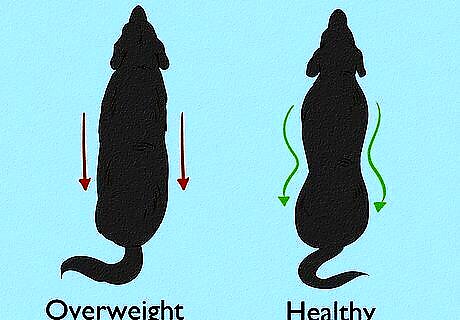
Look at your dog from above. The final test to visually determine if your dog is overweight is to look at your dog from above. From above, dogs at a healthy weight will have an hourglass figure where the dog’s abdomen is slimmer than the chest and the hips. When viewing from above, you should see a noticeable reduction in circumference from your dog’s chest to its hips.
Identifying Behavioral Symptoms
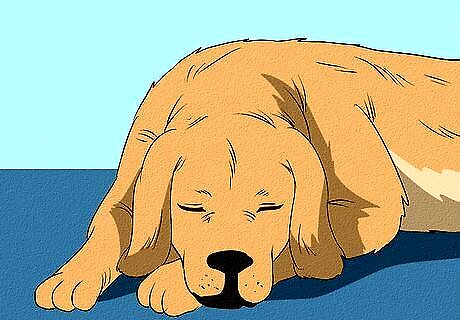
Check your dog’s reluctance to exercise. Try to take your dog outside to play fetch, run around, for a walk, or take your dog to the dog park. If your dog is reluctant to get up, lags behind, or stops or lies down frequently on your outings, then your dog might be overweight. Additionally, sleeping a lot, lying around all day, or showing a general unwillingness to move, i.e., lethargy, are also signs that your dog is overweight.
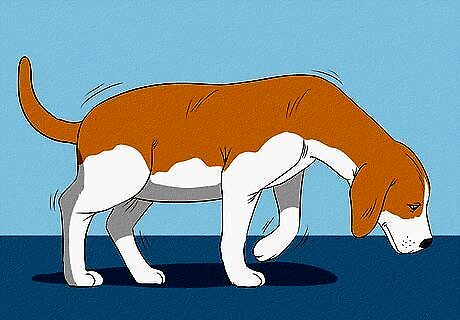
Observe how your dog moves around. Dog’s that are overweight tend to have a waddling gait, for example, a rolling from side to side when moving. Also, dogs that are overweight have difficulty moving, or need someone’s help to move. Also observe the pace at which your dog moves and the duration of your dog’s moving. Moving slowly and/or not being able to walk or run for very long are symptoms of being overweight.
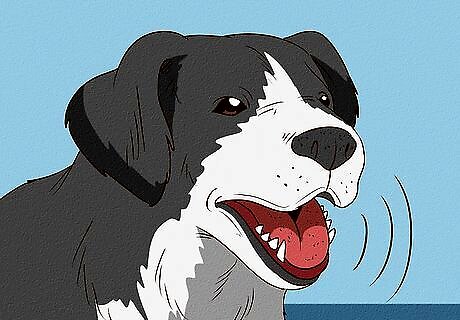
Pay attention to your dog’s breathing. Dogs that are overweight also have difficulty breathing. They might have respiratory distress, dyspnea, or need to make extra respiratory effort to breathe normally. An overweight dog might also have noisy breathing. For example, a harsh, rattling sound, i.e., stridor, wheezing, or crackling.
Weighing Your Dog
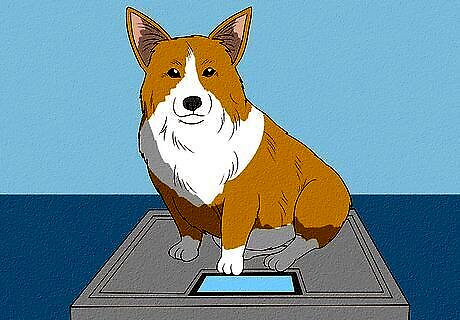
Weigh your dog at home. You can also determine if your dog is overweight by weighing your dog at home. First, weigh yourself. Then, if you have a small or medium sized dog, step on the scale while you are holding your dog to get a total weight. Lastly, subtract your weight from the total to get your dog’s weight. If you own a large dog that you cannot pick up, then take your dog to the vet or a pet grooming store. These places have scales that are big enough to weigh your large dog.
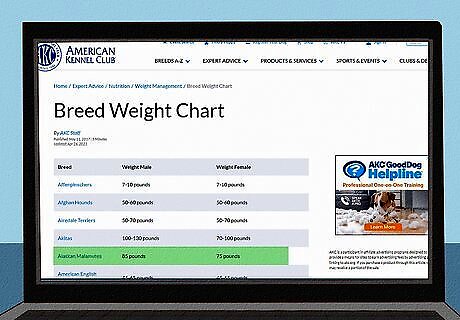
Know the ideal weight for your dog’s breed. Once you know your dog’s weight, know the ideal weight for your dog’s breed. If your dog is over the upper weight limit, then your dog might be overweight. However, be aware that even if your dog is heavier than the upper weight limit for its breed, it is not a guarantee that your dog is overweight. Therefore, use the chart as a guide only, and consult your vet.

Consult your vet. Once you have determined that your dog might be overweight, schedule an appointment with your vet. Your vet will be able to determine if your dog is overweight, or if your dog is just bigger than normal for its breed. If your vet determines that your dog is overweight, they will prescribe an adequate weight loss regimen. A treatment plan will most likely involve evaluating what your pet is eating, for example, treats, human food, portion size, and frequency, and making the necessary changes. It will also involve implementing changes to your dog’s exercise habits. You can reduce the carbs and fatty treats. But do not decrease the amount of protein in your dog's diet because that helps maintain their muscle mass.




















Comments
0 comment